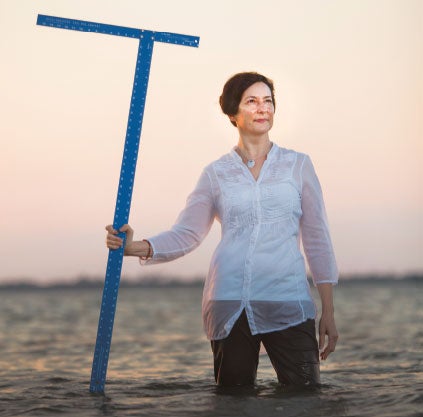 At first, the stories sounded like typical fish tales. Sailors spoke of being out to sea and surviving waves as tall as buildings. For ages these claims were dismissed, thought to be nothing but exaggerated descriptions of rough seas. In 1995, however, observations from an oil platform in the North Sea verified a wave that measured an astounding 84 feet tall. Subsequent satellite imagery confirmed that the appearance of these abnormally large waves, which came to be popularly known as rogue waves, is far more frequent than previously predicted. The frightened sailors, it turned out, were not lying.
At first, the stories sounded like typical fish tales. Sailors spoke of being out to sea and surviving waves as tall as buildings. For ages these claims were dismissed, thought to be nothing but exaggerated descriptions of rough seas. In 1995, however, observations from an oil platform in the North Sea verified a wave that measured an astounding 84 feet tall. Subsequent satellite imagery confirmed that the appearance of these abnormally large waves, which came to be popularly known as rogue waves, is far more frequent than previously predicted. The frightened sailors, it turned out, were not lying.
Rogue waves are technically defined as waves that are twice as tall as the average height of the largest one third of waves in a given area of ocean, explains mathematics professor Annalisa Calini. Their formation may be due to a number of different mechanisms, including the interaction of wind and currents, wave convergence due to the shape of the coast or sea floor, resonances and nonlinear instability and focusing. Rogue waves often occur in isolated instances, are very steep and feature deep troughs that make them loom even larger. Each year, rogue waves are suspected of causing the disappearance of a number of large ships that vanish suddenly from the ocean’s surface.
Given the terror and destruction caused by rogue waves, it would be nice to have a better idea of when and where they might occur. Helping make such predictions is Calini, who is investigating the role of chaos in nonlinear systems in order to help develop models that can better forecast rogue waves in deep water. If we can quantify the risk of extreme waves in a given region of the ocean, she believes, ship crews can better avoid the massive waves that threaten to obliterate their vessels.
Calini looks at lots of factors in her research, including the effects of wind, sea depth and a disorderly sea state on emerging wave patterns. In the end, she’d like to discover a reliable recipe for predicting the likelihood of rogue wave formation.
One thing she does not plan to do, however, is experience any of a rogue wave’s qualities firsthand. That she will leave to the sailors: “I think I’m happy to see it from the satellite.”
– Photo by Kip Bulwinkle ’04




